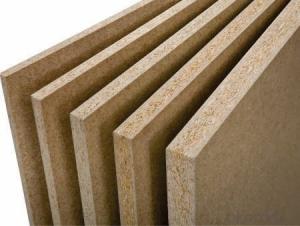When embarking on a new project, one of the first decisions you’ll face is choosing the right material. Plywood and MDF board are two popular options, but which one is best for your project? Let’s dive into the details and see what each has to offer.
The Charm of Plywood
Plywood has been a favorite among woodworkers and DIY enthusiasts for decades. It’s made from thin layers of wood veneer, or plies, that are glued together with the grain of each layer positioned at right angles to the others. This cross-grain construction gives plywood its strength and durability.
Plywood is known for its versatility. It can be used for a wide range of applications, from furniture making to cabinetry and even structural components in construction. The natural wood veneer also gives it a warm, organic look that many people find appealing.
One of the key advantages of plywood is its resistance to warping and cracking. The cross-grain layers help to counteract the natural tendency of wood to expand and contract with changes in humidity. This makes plywood a reliable choice for projects where stability is important.
However, plywood does have its drawbacks. It can be more expensive than MDF, especially for larger sheets or higher-quality grades. It’s also heavier, which might be a consideration if you’re planning to move your project around a lot.
The Functionality of MDF Board
Medium Density Fiberboard, or MDF, is a more modern material made from wood fibers and resin, which are compressed under high pressure. Unlike plywood, MDF has a uniform surface without any wood grain, making it ideal for painting and other surface treatments.
MDF is often praised for its affordability and lightweight nature. It’s a cost-effective choice for projects where the material’s appearance isn’t as important as its function. MDF is also easy to work with, as it can be cut, routed, and shaped without the risk of splintering that you might encounter with plywood.
One of the main benefits of MDF is its uniformity. Since it’s made from compressed wood fibers, it doesn’t have the natural inconsistencies you find in plywood, such as knots or variations in grain. This makes MDF perfect for creating smooth, professional-looking results.
However, MDF has its own set of challenges. It’s not as strong as plywood, especially when it comes to handling heavy loads or supporting large structures. MDF is also more susceptible to water damage, which can cause it to swell and lose shape.
The Battle of the Boards: A Practical Comparison
When deciding between plywood and MDF, it’s important to consider the specific requirements of your project. Here are a few factors to keep in mind:
– Cost: If you’re on a tight budget, MDF is usually the more economical option.
– Appearance: If you want a natural wood look, plywood is the way to go. If you plan to paint or laminate the surface, MDF offers a more consistent base.
– Durability: For projects that need to withstand the test of time, plywood’s strength and resistance to warping make it a superior choice.
– Ease of Use: MDF is generally easier to work with, especially for those new to woodworking or DIY projects.
– Weight: If portability is a concern, MDF’s lightweight nature might be more appealing.
– Moisture Resistance: Plywood is more resistant to moisture, making it suitable for projects in damp environments or outdoor use.
Personalizing Your Choice
Ultimately, the choice between plywood and MDF comes down to personal preference and the specific needs of your project. If you’re a fan of natural materials and the look of real wood, plywood might be the right fit for you. On the other hand, if you’re looking for a cost-effective, easy-to-work-with material that doesn’t require the same level of structural integrity, MDF could be the better option.
It’s also worth considering the environmental impact of your choice. Plywood, being made from layers of real wood, can be seen as more sustainable in the long run, as it uses less wood fiber overall. MDF, while made from recycled wood fibers, does involve more processing and the use of resins, which some may view as less environmentally friendly.
Making an Informed Decision
Before you head to the hardware store, take some time to think about what you want to achieve with your project. Consider the pros and cons of each material and how they align with your goals. Whether you’re building a piece of furniture, creating a decorative item, or embarking on a construction project, the right material can make all the difference.
In the end, there’s no one-size-fits-all answer to whether plywood or MDF is best for your project. It’s about finding the right balance between cost, appearance, durability, and ease of use. So, grab your tools, roll up your sleeves, and get ready to make something amazing with your chosen material.
Remember, the best project is one that not only looks great but also serves its purpose well, and choosing the right material is the first step towards that success. Happy building!

